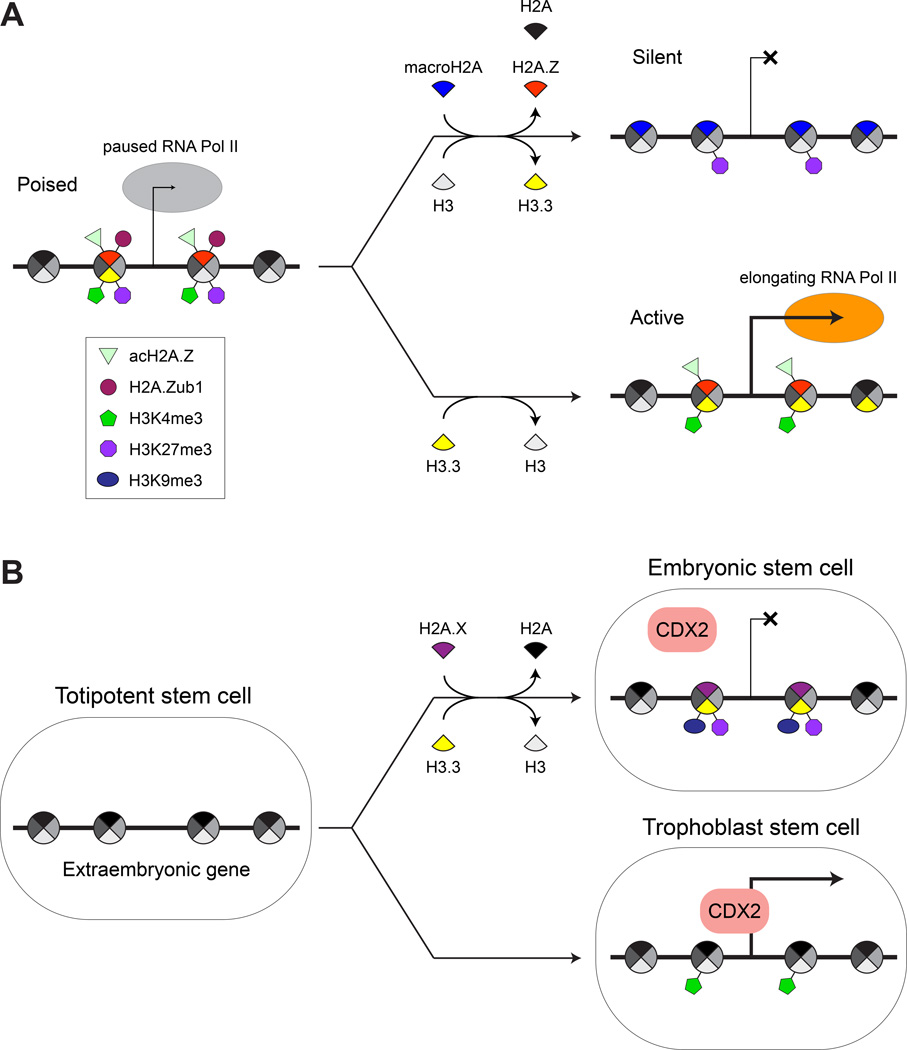Figure 2.
Models for histone variant and PTM dynamics in ESC differentiation and repression of extraembryonic genes. A. In ESCs, lineage specific differentiation genes are frequently marked by H2A.Z and bivalent chromatin PTMs, and are therefore silent but poised for future activation or stable repression, depending on the differentiation pathway. Evidence indicates that stable gene repression entails the replacement of H2A and H2A.Z with macroH2A and H3.3 with H3, and the removal of active PTMs (e.g., H3K4me3 and acH2A.Z). Gene activation entails the replacement of canonical H3 with H3.3 in gene bodies and the removal of repressive PTMs (e.g., H3K27me3 and H2A.Zub1). B. The inhibition of extraembryonic gene expression in ESCs appears to require the deposition of histone variants H2A.X and H3.3, which in turn enable the repressive PTMs H3K9me3 and H3K27me3, respectively. Recent evidence suggests that these pathways are altered in trophoblast stem cells, thus enabling the activation of extraembryonic genes.

